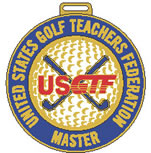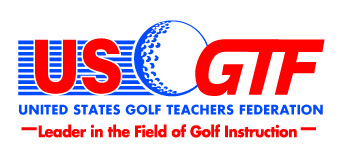Blog
GREAT AMERICAN TOURING PROFESSIONAL – KEEGAN BRADLEY
WORLD GOLF TEACHERS CUP UPDATE
WORLD GOLF TEACHERS CUP – NEW WEBSITE
UPCOMING USGTF LEVEL IV COURSES
USGTF CENTRAL REGION CHAMPIONSHIP RESULTS
SOUTHEAST REGION CHAMPIONSHIP RESULTS
Are we getting mixed signals from the USGA?
I’m confused. Our protectors of the game say if people played from a shorter distance they would enjoy the experience much more and play more. More enjoyment, more players. Sounds logical. So why would you then go completely opposite your initiative when showcasing your premier events. The USGA has always operated on the premise that in golf everyone plays the same way, from professionals to weekend warriors. It is appealing to think that you can go to Pebble Beach and hit from the same spots where Jack Nicklaus or Arnold Palmer played. That’s because even they played from yardages that most people could handle. By telling the average guy to move up while moving the very few farther back is nothing more than do as I say, not as I do. I’m not sure it is the right message to send.
At last someone is thinking clearly
I say, we should not care about how low a number a golfer shoots. That’s the object of the game. If golf is supposed to be about fun, then stop worrying about protecting par. Think about the objective of the manufacturers when they design equipment to help a person hit it farther. It is to make the game easier for the average person. Instead of hitting a four iron into the green, maybe the golfer can hit a seven iron. If adding on length so the person still has to hit a four iron, what’s the point? Why bother improving equipment at all. Let’s not forget that less than one percent of all golfers can actually break par. Golf might be better served by returning to the 1911 standards.
A FRESH LOOK AT MARKETING GOLF COMPETITIONS
Also in Indiana, I used to play in the Monticello Open, which had a long and storied history. They have pictures on the wall at Tippecanoe Country Club from the 1950s showing dozens of spectators viewing the action. Even a few touring professionals would tee it up. The last time I played in the event several years ago (it no longer welcomed all comers after that year), it was poorly run and only lasted one round.
I recently played in the Valdosta Open in Georgia at the Valdosta Country Club, a very fine facility. Only 38 players showed up, and when I first started playing back in the 1990s it was common to see 70+ players. In the 1990s in Pensacola, Florida, the Gulf Coast Scratch Tour for amateurs had to cap participation at 120 players. Today they get 30-40 players per event.
What in the world has happened to tournament golf? Nationwide, tournament participation is generally down from what it was 30, 20, and even 10 years ago. Is there any way to revive it?
Frankly, I don’t have any good answers to what happened. I really don’t know. I don’t think the economy has anything to do with it, because tournament participation has been on a downward trend for more than a decade.
What I do know is that our US and World Golf Teachers Cup events are not suffering from this malaise. Perhaps it’s the fact that we sell more than just a tournament – we sell an experience. We use this word a lot, but the camaraderie at these championships is second to none. People really enjoy renewing old friendships and making new ones, and I’m sure a lot of networking goes on, too. We also tend to play our events in family-friendly tourist venues, which also doesn’t hurt.
So maybe these other events need to take a lesson – a tournament lesson – from us. Offer an experience, more so than just a golf tournament, and they might see some old faces they haven’t seen in awhile…and undoubtedly some new ones.




